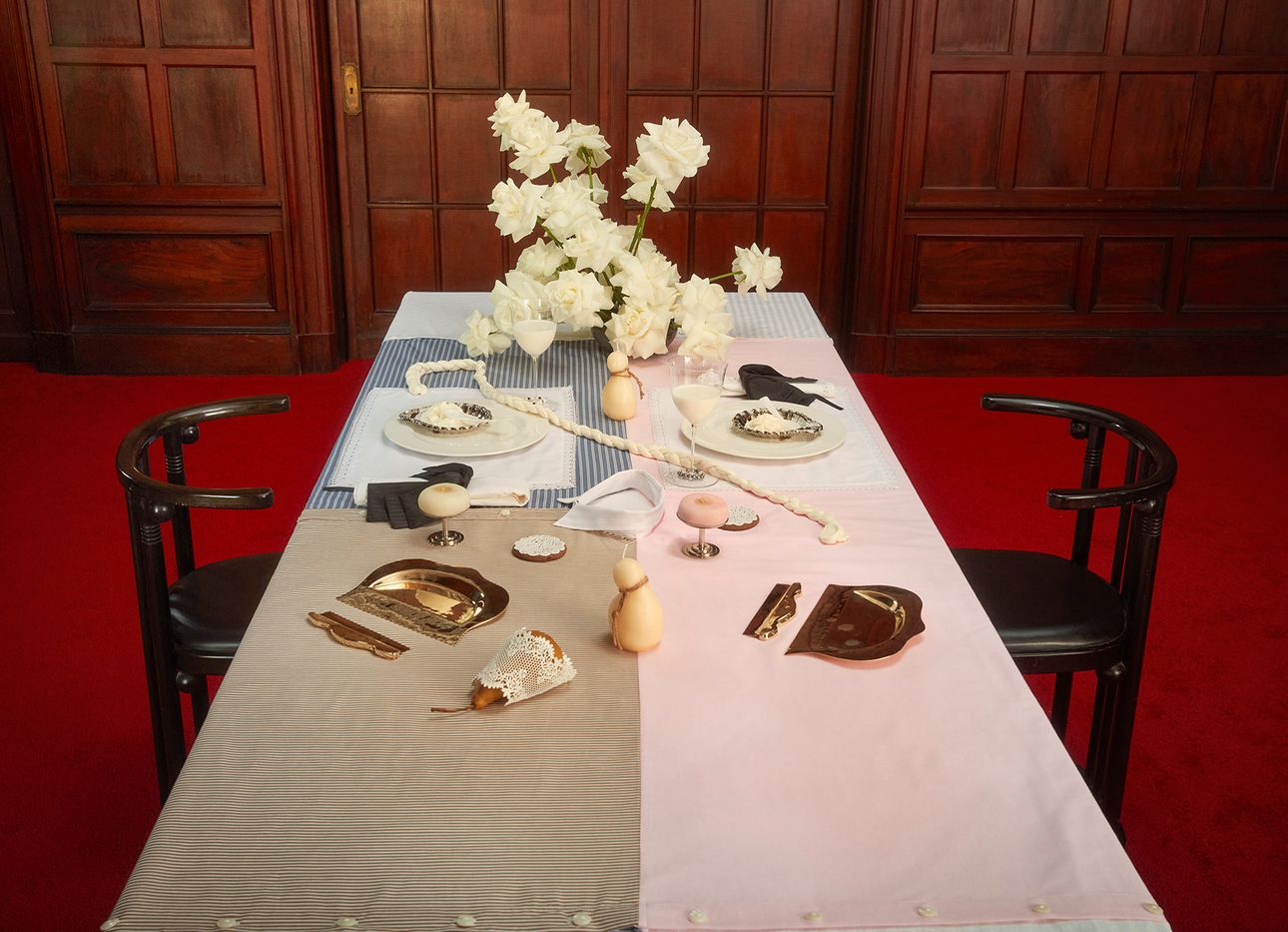
Gohar World’s Handmade Tableware Makes for Satisfyingly Surreal Meals
For artist Laila Gohar, meals are all about “creating moments,” as she puts it, “and setting the stage for them to happen.” Gohar, who hosted at least one dinner party a week in her New York apartment before the pandemic, entertains guests with her delicious, engagingly absurdist handiwork, such as blocks of butter molded into the shapes of an eye, nose, ear, and mouth, or a Christmas tree–like tower of langoustines and pink roses. Each fantastical concoction radiates with a heartfelt desire to connect with her diners in profound ways. “I am guided—obsessed, really—with beauty,” Gohar says. “My mission on earth is to cultivate joy and happiness, and to channel a nearly overpowering empathy into my work. It’s about so much more than food.”
When Covid-19 forced people apart, in sharp contrast to the inherently communal nature of her work, Gohar retreated—first literally, from Manhattan to Oaxaca, Mexico; and then figuratively, into a dream world created around a make-believe globe-trotting aunt, whom Gohar devised with her sister and most trusted collaborator, Nadia, an accomplished painter. Out of this fictional storyline came the siblings’ just-launched tableware line, Gohar World, an effort to translate Gohar’s ephemeral, edible experiences into everyday objects that evoke a sense of nobility and permanence. The sisters had long discussed the idea, which allowed them to indulge in their similar tastes while gaining appreciation for their different skill sets. “We didn’t know each other on a professional level before this,” Gohar says. “Now we’re collaborating with friends and throwing parties for our mythical aunt, developing her character, and expanding her realm.”
Like Gohar’s food, the collection’s 40 irreverent, handmade accessories consider the smallest details. Take the hard candy–shaped utensil rests, which refract light as it passes through their delicately rippled Venetian-glass forms; or the balloon-like muslin crystal tumblers, expertly made by the 200-year-old Viennese workshop Lobmeyr (which has produced glass works for Austrian architects Josef Hoffmann and Adolf Loos). A hand-painted eye, designed by jeweler Ted Muehling, features on the base of each one, peering up at its user.
There are grander gestures, too, such as a wiggly, candelabra-esque centerpiece inspired by the wrought ironwork long produced in the Gohars’ native Cairo. Their version of the craft veers from the expected, of course, and holds eggs instead of candles. This week, the sisters will add linen tablecloths and dinner napkins to their offerings, as well as Murano glass swizzle sticks designed to resemble lace and giggle-inducing, hand-stitched linen aprons for wine bottles (or other vessels) that border on the surreal. Contextualizing these lasting items within her larger, traditionally fleeting body of work comes easily to Gohar. “Although the Gohar World objects are permanent,” she says, “it’s about sharing our imaginary dreamlike state.”
Her efforts to develop eccentric ways to reinvent the dining experience will soon transcend tableware, as Gohar’s upcoming projects make evident. Among them: Her first product collaboration with a fashion house will be revealed next week in Italy, during Milan Design Week, which will also see the debut of Gohar’s inaugural piece of furniture, designed with post-pandemic entertaining in mind. Her secret to expanding her practice while maintaining her signature creative sparkle? “You have time for what you make time for,” Gohar says. “All of these things I dreamt up are finally happening.”